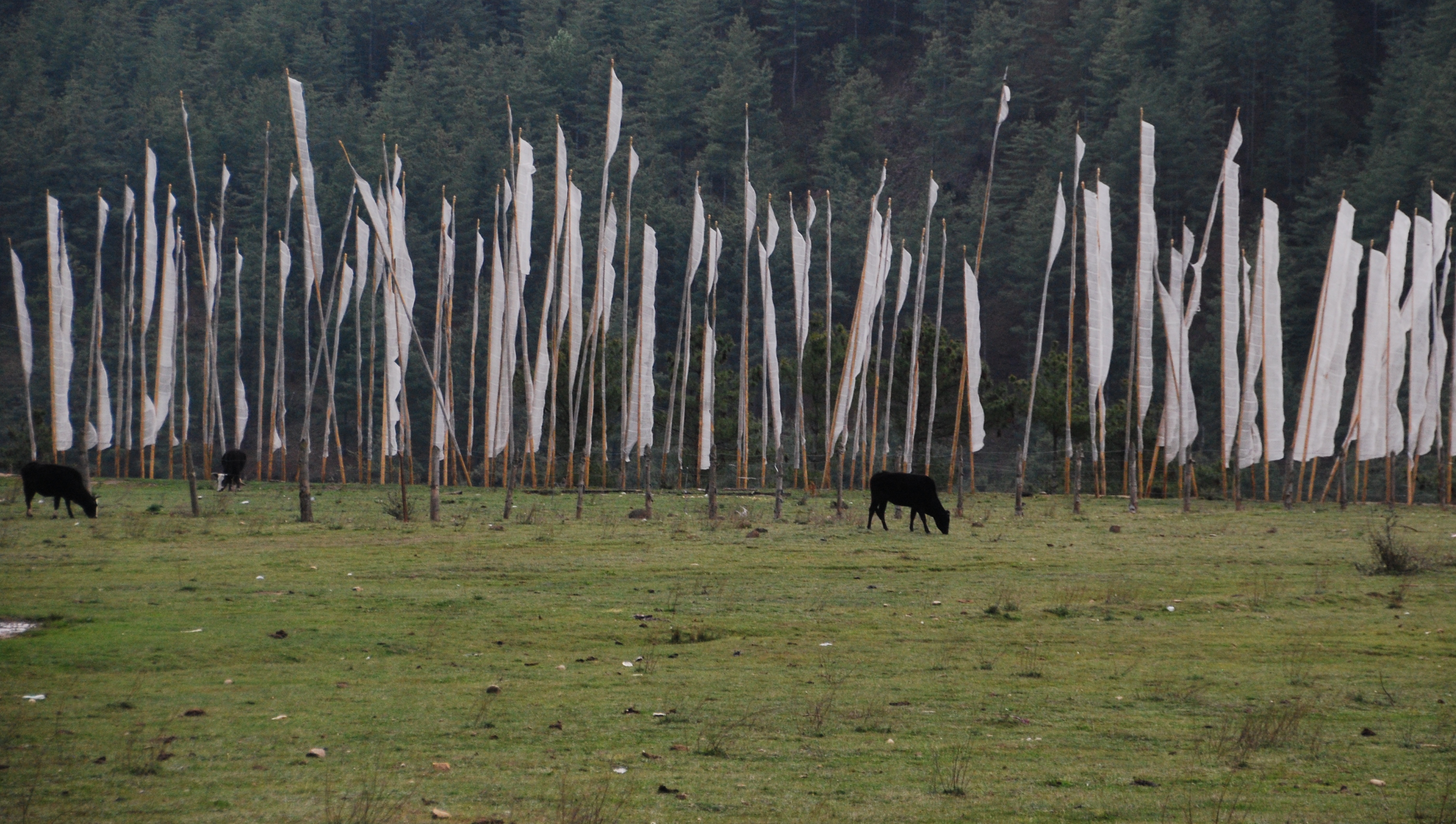Living like locals
Early morning in the Bumthang Valley meant an attempted run at 2,600 metres (big mistake) and an amazing breakfast from local produce. We had buckwheat pancakes with locally made wild strawberry jam and buckwheat honey, eggs from backyard chickens, beautiful cheese made in the local village and a slab of local butter bigger than an iPhone. As on previous days, we started the day with full stomachs and great anticipation.
Today was basically a day of retracing our steps on the National Highway. This meant enjoying the amazing scenery, crossing two 3,000 metre passes, experiencing all kinds of weather, flora and fauna, and ending up in a remote mountain top village where we stayed in a local farmer’s house.
The drive through the Chamaa Valley was as sparkling green and beautiful as the day before, traditional farm houses scattered amongst the fertile fields, cows grazing, people working in the fields or yards. We followed the desperately winding and narrow road to Trongsa and past their amazing dzong, continued along the steep cut in the cliff as we headed further west. The shades of green of the thick trees on the opposite side of the narrow valley compensated for Taupo’s warnings that these forests are where demons live.
Eventually we stopped for lunch, by chance ending up sitting at the same table as ‘the Swiss guy’ who came to Bhutan 44 years ago at the request of the Third King, married a local girl and raised a family, introduced Bhutan to the art of making cheese and raising bees for honey. He still lives in the Bhumtang Valley, a piece of living history.
We wound our way over the mountains to top out at Pele La Pass at 3,400 metres, our prayer flags still flapping in the breeze and the weather apparently much better for commerce compared to the drizzle and fog from yesterday because Julie bought a beautiful ‘almost new’ blanket made of yak hair. Once we put it in the car and drove off the car smelled like, well, yaks.
The road followed a familiar path, narrow and constantly winding up and down the mountains, our driver Mithu between moments when he would briefly open his door and spit out wads of betel nut juice, what Bhutanese call doma, would negotiate the blind passing of slow trucks, the ceaseless pot holes, eroded edges, landslide rocks, muddy spots, oncoming cars and lorries from the nearby quarry until we finally hit the village of Chusomsa.
We stopped at a bridge briefly to let our heart slow down and Julie and I took a moment to wander amongst the few homes perched on the cliffside. She immediately attracted a horde of children, most between 5 and 12, some still in their small school kiras for the girls or ghos for the boys, all keen to practise their English, asking and answering questions in mini-mob excitement. Julie was in her element surrounded by her audience and the kids thrived off her attention.
We drove up this secondary road, which doesn’t say much for it, following the creek while steep hillsides flanked us on both sides. We then crossed the creek and started to head up what turned out to be an amazing 10 km road of steep switchbacks, endlessly climbing up the side of the hill, rice paddies in farm houses below us getting smaller and smaller, precariously perched on this mountain face. Never would I have guessed we would be doing this to get to our farmstay for the night but eventually we made it to the top of the ridge after having climbed about 600 metres to the village of Samtengang.
But if the drive up the mountain was amazing, the community at the top was even more so. The village had a couple of schools, the senior school having dorm accommodation for kids living further away, and homes scattered all over the flattish ridge. We followed the dirt track for a while, our drivers asking directions along the way, until we came across a somewhat modest and unfinished two story home cut into the slope.
The housewife came out to see what was happening, totally surprised to see a car load of people in her muddy driveway. Clearly there had been a communication breakdown but we were here and a few pointed phone calls back to head office wasn’t going to change that. The home was modest by every standard, no furniture to live in or sleep on except in the ‘guest’ room where we took our tea and meals. The finishings on the home were very poor, a solidly built timber frame with mud brick walls, mud plastering and paint to hide the mess. Dark and without heating, a squat toilet, plenty of dust and unfinished details, loose floorboards, mattresses on the ground and some very basic but filling food. We didn’t expect this standard, our guide was clearly embarrassed, but we trooped on and made the best of it. All part of the experience.
We settled in to our modest abode and then walked through the village where we spoke to countless kids who wanted to practice their English (Julie being lost for words when a little boy asked her how old she was) before we returned for a dinner of sorts with just the basic staples and then climbed into our sleeping sheets on the mattresses and slept like unconscious babies.











